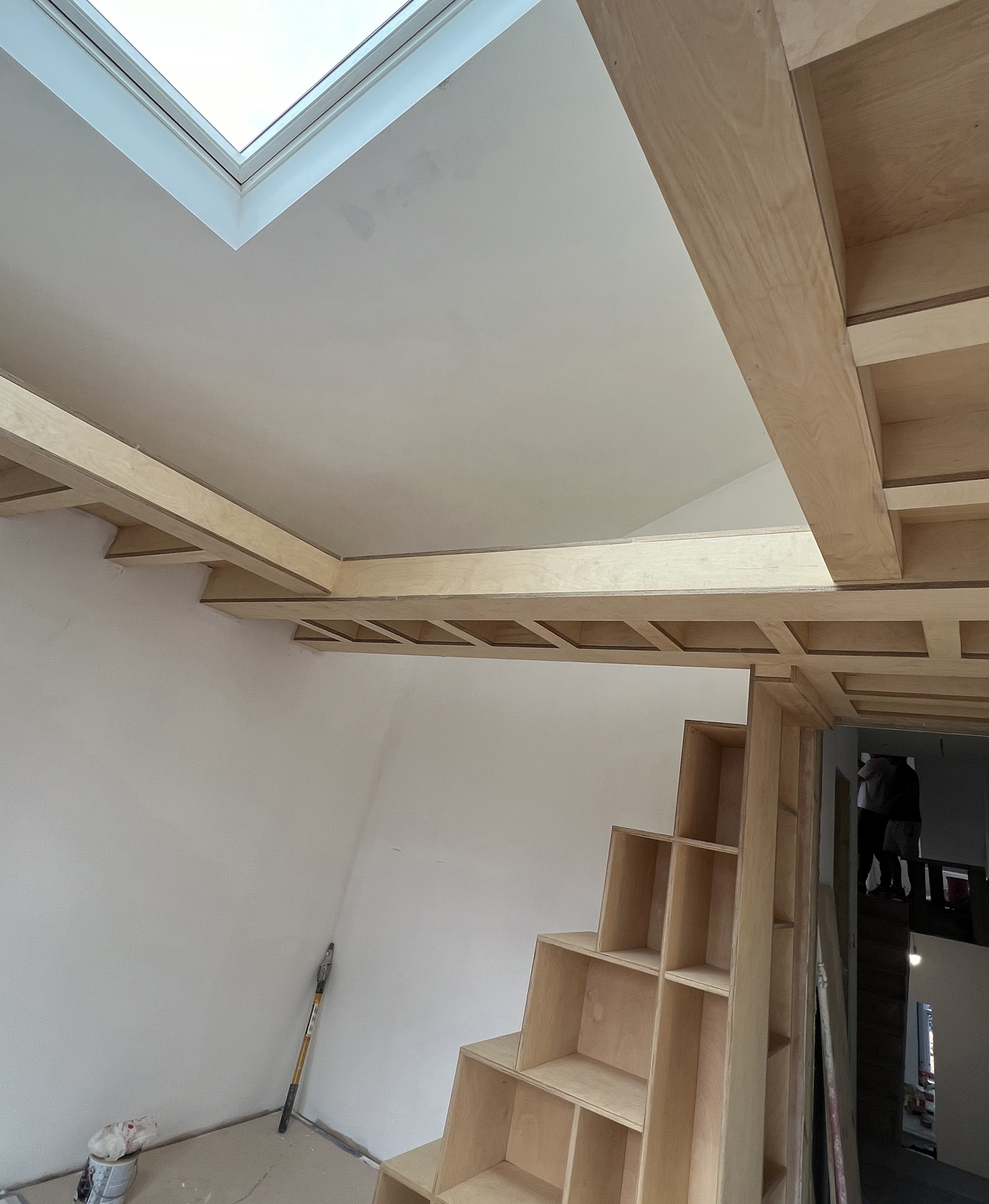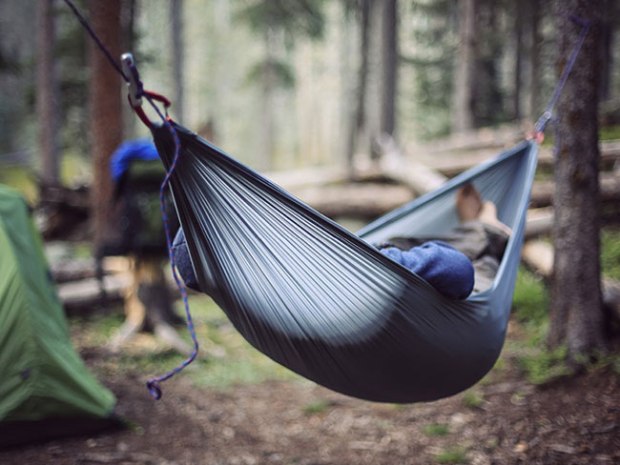- 8 Airplane Footrest Hammock!Travel comfortably - October 9, 2023
- top 7 Pool Float Water Hammock for a Relaxing Summer - October 9, 2023
- top 5 Space SaverSingle Hammock Stand Maximize Comfort and Space - October 9, 2023
No, it is highly unlikely for an adult to suffocate in a hammock. However, for babies, there is a serious safety hazard.
According to the CPSC, mini-hammocks and baby hammocks without a spreader bar can cause strangulation and death. So, it is important to be cautious when using hammocks with young children.

Credit: risedesignstudio.co.uk
Understanding The Risks And Realities Of Suffocation In A Hammock
Exploring The Safety Concerns Surrounding Sleeping In A Hammock
When it comes to sleeping in a hammock, many people wonder about the safety concerns and potential risks involved. While sleeping in a hammock can offer a unique and comfortable experience, understanding the safety precautions is crucial to ensure a safe and restful sleep.
One of the main concerns about sleeping in a hammock is the risk of suffocation, especially for infants and young children. The design of a hammock creates a cocoon-like environment, which, if not used correctly, can lead to accidental suffocation. Additionally, there are other safety concerns related to falling out of a hammock or improper setup.
Investigating The Potential Risks Of Suffocation In A Hammock
The potential risk of suffocation in a hammock primarily applies to infants and young children. Their small size and limited mobility make them more susceptible to accidental suffocation if proper precautions are not taken. It is essential to never leave babies unattended in a hammock and ensure that they can breathe freely and comfortably.
Factors that contribute to the risk of suffocation in a hammock include a lack of airflow, improper positioning, and loose or entangled fabric that can obstruct the airways. Therefore, it is crucial to hang the hammock properly, ensuring there is enough space for adequate airflow and that the fabric is taut but not too tight.
| Safe Practices for Sleeping in a Hammock: |
|---|
| – Always supervise infants and young children in a hammock |
| – Ensure proper ventilation and airflow |
| – Hang the hammock securely and at an appropriate height |
| – Avoid using loose or entangled fabric |
| – Follow the manufacturer’s instructions for setup |
While suffocation in a hammock is highly unlikely for adults, it is vital to be aware of the risks to prevent any accidents. Following these safety guidelines and using common sense can help ensure a safe and enjoyable experience while sleeping in a hammock.
Remember, it is always essential to prioritize safety and take precautions, especially when it involves infants and young children. By understanding the risks and following proper practices, you can enjoy the many benefits of sleeping in a hammock while minimizing potential hazards.
The Physiology Of Sleeping In A Hammock
Examining The Impact Of Hammock Sleeping On Breathing And Oxygen Levels
Sleeping in a hammock offers a unique and relaxing experience, but have you ever wondered how it affects your breathing and oxygen levels? Let’s explore the physiological aspects of sleeping in a hammock to understand how it may impact your respiration.When you lay flat on a traditional bed, gravity pushes down on your body, including your diaphragm and chest cavity. This can sometimes restrict the full expansion of your lungs while breathing. However, the slight curve of a hammock can alleviate this issue, allowing for better chest expansion and potentially improving overall respiration.One of the benefits of sleeping in a hammock is the natural position it puts your body in. The gentle sway and ergonomic support allow your body to relax, minimizing pressure points and promoting deep, restful sleep. This optimal sleeping position can indirectly contribute to better breathing patterns and oxygen levels throughout the night.Understanding How The Body’s Position In A Hammock Affects Respiration
The unique curvature and support of a hammock can have a positive impact on your respiration. Here’s how:1. Improved lung function: The natural curvature of a hammock encourages a more open chest cavity, allowing the lungs to expand fully. This may result in increased oxygen intake and improved overall lung function.2. Reduced muscle tension: Traditional beds often cause muscle tension, particularly in the neck, shoulders, and back. This tension can constrict the airways and make it more difficult to breathe deeply. Sleeping in a hammock, on the other hand, promotes relaxation and reduces muscle tension, enabling easier breathing.3. Enhanced blood circulation: The gentle rocking motion of a hammock has been found to improve blood circulation during sleep. Proper blood circulation ensures that oxygen is effectively transported throughout the body, supporting optimal respiration.In conclusion, while traditional beds can sometimes restrict breathing and oxygen levels, sleeping in a hammock provides a more conducive environment for deep, restful sleep and improved respiration. The unique curvature and gentle sway allow for better chest expansion, reduced muscle tension, and enhanced blood circulation, ultimately promoting healthier breathing patterns. So, if you’re looking for a comfortable and potentially beneficial sleep experience, consider giving hammock sleeping a try.Debunking The Myth: Can You Really Suffocate In A Hammock?
Dispelling Common Misconceptions And Exaggerated Claims
When it comes to the safety of hammocks, there are often misconceptions and exaggerated claims floating around, especially when it comes to the risk of suffocation. Many people have wondered, can you really suffocate in a hammock? We’re here to debunk this myth and provide you with the facts.
First and foremost, it’s important to understand that suffocation in a hammock is highly unlikely for adults. Hammocks are designed to cradle your body comfortably, allowing for a relaxing and restful experience. The fabric or netting used in hammocks is breathable, meaning that air can easily pass through. This eliminates the risk of suffocation that many people fear.
However, it is crucial to note that when it comes to babies and young children, there are certain safety considerations to keep in mind. The Consumer Product Safety Commission (CPSC) advises against placing babies in hammocks without a spreader bar, as this can increase the risk of strangulation and suffocation. It’s always important to prioritize the safety of young children and use hammocks that adhere to the CPSC’s safety guidelines.
Presenting Scientific Evidence And Research Findings On Hammock Suffocation
To further reinforce the fact that suffocation in a hammock for adults is highly improbable, let’s take a look at some scientific evidence and research findings. One study conducted by the London School of Hygiene and Tropical Medicine examined the airflow and oxygen content inside a hammock and found that it remains well within safe limits, ensuring proper ventilation.
Another study published in the Journal of Science and Medicine in Sport explored the physiological responses of individuals sleeping in hammocks. The research discovered that sleeping in a hammock actually led to improved airflow and oxygenation, resulting in a more restful and rejuvenating sleep.
Furthermore, experts in the field of biomechanics have analyzed the body’s position and pressure points while lying in a hammock. They have concluded that hammocks provide adequate support and even distribution of weight, reducing the likelihood of pressure sores or discomfort.
In conclusion, it is crucial to separate fact from fiction when it comes to the risk of suffocation in a hammock. While there are safety considerations for babies and young children, suffocation in a hammock for adults is highly unlikely. The scientific evidence and research findings debunk this myth and assure us of the hammock’s safety. So go ahead and enjoy the relaxing and comfortable experience that hammocks offer.
Safe Hammock Sleeping Practices
Sleeping in a hammock can provide a unique and comfortable sleeping experience. However, it’s important to practice safe hammock sleeping to minimize any potential risks. By following some guidelines for safe and secure hammock set-up and adopting proper sleeping positions, you can enjoy a restful night’s sleep without worrying about suffocation or accidents.
Providing Guidelines For Safe And Secure Hammock Set-up
When setting up your hammock, it’s crucial to ensure that it is securely fastened and can safely support your weight. Here are some guidelines to follow:
- Choose a sturdy and reliable hammock made from high-quality materials.
- Inspect the hammock for any signs of damage or wear and tear before use.
- Hang the hammock using strong and reliable straps or cords specifically designed for hammocks.
- Ensure that the hammock is properly attached to sturdy anchor points, such as trees or posts, with enough distance for proper tension.
- Regularly check the set-up for any signs of instability or loosening.
- Avoid jumping, bouncing, or exerting excessive force on the hammock, as it can compromise its stability.
- Keep the hammock at a safe height from the ground to prevent injuries in case of a fall.
Educating Readers On Proper Sleeping Positions To Minimize Risks
In addition to setting up your hammock securely, it’s also crucial to adopt proper sleeping positions to minimize the risk of accidents or discomfort. Here are some recommendations:
- Position your hammock diagonally to achieve a flatter sleeping surface, which can provide better support and decrease the curvature in your body.
- Lie down in a slightly diagonal position with your head elevated above your feet. This position helps distribute your weight more evenly and reduces pressure points.
- Ensure that your hammock is not overly taut, as it can cause discomfort and restrict movement during sleep.
- Avoid sleeping with your hammock too loose, as it can create a deep sag that can lead to discomfort or potential suffocation.
- Use additional support, such as pillows or underquilts, to enhance comfort and provide adequate insulation.
- Refrain from sleeping in a fully reclined position, as it can strain your back and neck.
By following these safe hammock sleeping practices and guidelines for secure set-up, you can enjoy a peaceful and comfortable night’s sleep in your hammock without worrying about suffocation or accidents. Remember to prioritize safety and take necessary precautions to ensure a restful and rejuvenating experience.
Conclusion: Hammocks, Safety, And Myth-busting
Recapitulating The Key Takeaways And Debunked Notions
Here’s a quick recap to ensure that you have all the important information about hammocks, safety, and the myth-busting we’ve covered.- Can you suffocate in a hammock? The answer is: for adults, it is nearly impossible. Suffocation in a hammock is not a safety concern for grown-ups.
- However, when it comes to babies, there is a serious safety hazard. It is crucial to ensure that babies are not left unattended in a hammock to prevent accidents and potential suffocation.
- Another debunked notion is that hammocks are more dangerous than we think. When used responsibly, hammocks are safe for adults and provide a comfortable sleeping experience.
- Some concerns about hammocks causing back pain or poor posture have also been addressed. While napping occasionally in a hammock is generally safe, it is advisable to consult a doctor before making it a nightly routine.
- The myth that sleeping in a hammock while camping is unsafe has been busted. In fact, hammocks offer a more comfortable alternative to sleeping on the cold, hard, and uneven ground.
Encouraging Responsible Hammock Use And Dispelling Fears
Now that we have clarified the facts and busted some common myths, it is important to encourage responsible hammock use and dispel any remaining fears.- Always ensure that babies are not left unattended in a hammock. Their safety is paramount, and it is best to opt for safer sleeping options designed specifically for infants.
- When using a hammock, whether for napping or sleeping while camping, follow the manufacturer’s guidelines for setup and weight limits. Using quality materials and proper installation will enhance safety.
- It is also essential to refrain from jumping, bouncing, or having more than one person in a hammock at a time. These actions can increase the risk of falls and injuries.
- Remember, hammocks are designed to be enjoyed and provide a comfortable sleeping experience. With proper precautions and responsible use, you can relax and unwind without worrying about suffocation or any significant safety concerns.
Frequently Asked Questions Of Can You Suffocate In A Hammock
Is It Safe To Sleep In A Hammock?
Sleeping in a hammock is generally safe for occasional napping, but consult a doctor before doing it regularly. It may cause back pain or poor posture. Do not allow young children in a hammock alone, as there is a risk of strangulation or suffocation.
Ensure the hammock is high-quality and properly hung for comfortable sleep.
Can A Couple Sleep In A Hammock?
Couples can sleep in a hammock as long as they choose a high-quality, durable hammock and hang it correctly. Adding insulation or a bugnet can make it more comfortable. However, it’s important to note that hammocks pose a suffocation risk to young children.
Is It Safe To Sleep In A Hammock While Camping?
Yes, it is safe to sleep in a hammock while camping. It is one of the most comfortable ways to sleep, especially compared to sleeping on the ground. Just make sure to choose a high-quality hammock and hang it correctly.
However, it is recommended to consult with a doctor before sleeping in a hammock regularly, as it may have side effects like back pain or poor posture.
Can Suffocation Occur While Sleeping In A Hammock?
No, suffocation in a hammock is highly unlikely for adults. However, it poses a serious safety hazard for babies.
Is It Safe To Sleep In A Hammock While Camping?
Absolutely! Sleeping in a hammock while camping is not only safe but also more comfortable than sleeping on uneven ground.
Are There Any Health Benefits To Sleeping In A Hammock?
While some benefits are anecdotal, occasional napping in a hammock is generally considered safe. For nightly use, consult a doctor to avoid back pain or poor posture.
How Comfortable Are Two-person Hammocks For Couples?
With high-quality materials and proper installation, two-person hammocks are just as comfortable as single hammocks. Adding insulation or bug nets can enhance the experience further.
Conclusion
Sleeping in a hammock can be a relaxing and enjoyable experience for most people. However, it’s important to remember that hammocks can pose risks, especially for young children. The strangulation and suffocation hazards associated with hammocks make it crucial to follow safety guidelines and avoid certain behaviors.
While suffocation in adults is highly unlikely, it’s essential to prioritize the safety and well-being of young children around hammocks. If you have any concerns or questions, it’s always best to consult with a medical professional. By being aware of potential risks and taking necessary precautions, you can safely enjoy the comfort of a hammock.






